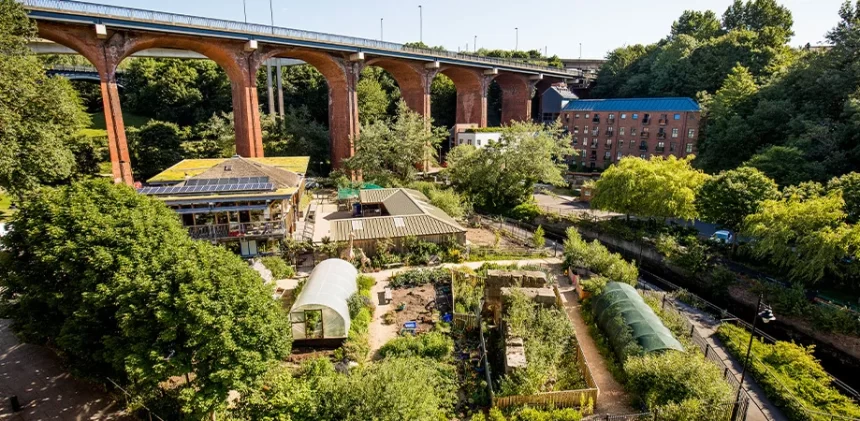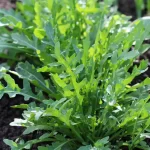In the middle of the city’s concrete jungle, a new trend is growing – urban gardening. It’s all about turning small spaces into green, lush retreats. In the busy chaos of city life, these little gardens give people a chance to enjoy nature, even if they don’t have a lot of room. You’d be surprised how even the tiniest balcony or backyard can be transformed into a beautiful, thriving garden with a little creativity and smart planning. In this article, I’ll explain urban gardening, how it benefits city folks, and some tips and tricks for growing your green oasis in a small urban space.
Bringing Life Back to City Spaces
Urban gardens can change empty or forgotten spaces in cities into beautiful, green places full of life. This not only makes the city look better but also helps the environment and brings people together.
Using roofs and walls for gardens can add a lot more green to a city. These living roofs and walls are good for plants and animals, and they also help keep buildings cool and use less energy.
Changing empty lots or abandoned areas into community gardens can turn ugly spaces into something special. These gardens can become places where people come together and feel proud of their neighborhood
Benefits Of Urban Gardening
Far from being a mere hobby or aesthetic enhancement, urban gardening unfurls a tapestry of benefits for individuals and communities alike:
- A Place to Relax and Be Healthy: City gardens aren’t just nice to look at. They’re places where you can feel calm, less stressed, and happier. They’re also great spots to exercise and live a healthy life. –
- Growing Your Own Food: Planting your own veggies in city gardens helps grow local food, so we don’t need to bring in food from far away. It also means you can eat fresh, healthy food you grew yourself.
- Bringing People Together: Urban gardens are places where people can meet, share what they know, and make friends with their neighbors. They get people involved in the community and working together.
- Helping the Environment: These green spaces fight pollution in the city, make it quieter, give animals a place to live, and cool the city down. They help make the city a better place for everyone
Maximizing Your Green Canvas
In cities, every little bit of space is important, but even the tiniest spots can be turned into beautiful gardens. Here’s how:
- Gardens That Grow Up: Use climbing plants like tomatoes and beans to make walls and fences green.
- Hanging Plants: Put herbs and flowers in hanging baskets and planters that go up and down.
- Lots of Different Pots: Try using all kinds of containers in different shapes and sizes. Get creative – old furniture, cans, or buckets can be used to grow plants.
- Window and Balcony Gardens: Make balconies and windowsills into small gardens with planters that fit on railings and window boxes. Grow a mix of herbs, flowers, and small veggies.
- Gardening with Others: Join or start a community garden where people share bigger plots of land and garden together. Picking the Right Plants: When you don’t have a lot of space in a city garden, it’s very important to choose the right plants.
Here’s what to consider:
- Plants That Fit in Small Spaces: Pick plants that are small or don’t grow too big to fit in tight spots. For gardens that grow up or in containers, choose plants that like to climb or grow in a bushy way. —
- Think About Sunlight: Pick plants based on how much sun your space gets. Some plants love lots of sun, while others like more shade. Make sure to match your plants with the kind of light they need. –
- Plants You Can Eat: Grow herbs, salad greens, or veggies that you can pick and eat right from your garden. This saves space and lets you enjoy fresh food you grew yourself.
Thoughtful Design and Care in Urban Gardening:
Strategic Planning Sketch a garden blueprint pre-planting. Ensure proper air circulation and sunlight for each plant. Companion planting can boost yields and deter pests.
Water Wisdom In urban settings, water can be scarce. Opt for drip irrigation or self-watering systems to minimize waste and keep plants quenched.
Soil and Sustenance Monitor your garden’s soil health. Use organic compost and fertilizers to enrich the soil and support robust plant growth. Raised beds or premium potting soil can be excellent alternatives.
Pest Defense Urban gardens may face pest challenges. Employ eco-friendly pest control like companion planting, physical barriers or natural deterrents.
Sustainable Practices and Eco-Friendly Tips
Urban gardening isn’t just about growing plants; it’s about fostering a sustainable relationship with the environment. Here are some eco-friendly strategies to enhance your urban garden:
- Composting: Transform kitchen scraps and garden waste into nutrient-rich compost. This not only reduces waste but also provides excellent food for your plants.
- Rainwater Harvesting: Set up a system to collect and store rainwater. This eco-friendly practice reduces reliance on tap water and is great for watering your plants.
- Pollinator-Friendly Plants: Choose plants that attract bees, butterflies and other pollinators. This not only helps the ecosystem but also ensures better pollination for your plants.
- Natural Pest Control: Instead of chemical pesticides, opt for natural alternatives. Introduce beneficial insects like ladybugs or use neem oil and soapy water sprays to keep pests at bay.
Community Engagement and Educational Opportunities
Urban gardening goes beyond individual plots; it’s a communal activity that can bring people together and serve as a valuable educational tool.
Workshops and Events Organize or participate in gardening workshops and events. This is a great way to learn new skills, share knowledge and meet fellow garden enthusiasts.
School Projects Collaborating with local schools to create educational gardens can teach children about biology, ecology and nutrition.
Public Awareness Use your garden to raise awareness about environmental issues, sustainability and the importance of local food systems.
Personal Fulfillment and Creative Expression
Urban gardening is a canvas for personal expression and creativity.
- Garden Art: Incorporate art into your garden with sculptures, painted rocks or creative planters. This adds a personal touch and makes your garden uniquely yours.
- Themed Gardens: Create themed areas like a herb garden, a butterfly garden or a color-coordinated section. This brings a sense of order and beauty to your space.
- Relaxation and Mindfulness: Use your garden as a space for relaxation and mindfulness. Whether it’s through quiet contemplation or active gardening, it can be a sanctuary for mental peace.
Adapting to Urban Challenges
Urban gardening requires innovative solutions to adapt to the unique challenges of city living.
- Space Efficiency: In densely populated areas, space is at a premium. Utilizing stackable planters, folding furniture and modular gardening systems can help maximize the use of limited space.
- Pollution and Climate Resilience: Selecting plants that are tolerant of urban pollution and extreme weather conditions is crucial. These plants are more likely to thrive and contribute to a healthier urban ecosystem.
Connecting with Nature
In the midst of concrete and steel, urban gardens serve as vital connections to the natural world, offering psychological and physical benefits.
Nature Therapy Regular interaction with nature, even in small doses, has been shown to reduce stress, improve mood and enhance cognitive function.
Biodiversity Hotspots Urban gardens can act as mini-reserves for urban wildlife, supporting a range of species from birds and bees to butterflies and beneficial insects.
Fostering Sustainable Lifestyles
Urban gardens are excellent tools for promoting sustainability and self-sufficiency in urban environments.
- Growing Organic: By growing their own organic produce, urban gardeners reduce their carbon footprint and gain access to fresh, healthy food.
- Educating on Sustainability: These gardens are platforms for educating urban dwellers about sustainable practices, including water conservation, waste reduction and renewable energy use.
FAQs
Yes, you can grow organic produce by avoiding synthetic pesticides and fertilizers and using organic compost and natural pest control methods.
Use natural pest deterrents like neem oil, encourage beneficial insects, and employ physical barriers like netting. Regularly inspect plants for signs of pests.
It can be very budget-friendly. Many urban gardeners use recycled containers and DIY solutions. The cost largely depends on how much you want to invest in materials and plants.
Yes, urban gardening can improve air quality, support pollinators, reduce urban heat island effect, and promote biodiversity.
Begin by assessing your space, determining how much sunlight it receives, and choosing suitable plants. Get quality soil and containers, and start with a few easy-to-grow plants to gain confidence.
Regular watering, adequate sunlight, proper fertilization, and pest control are key. Also, regularly prune and check your plants to ensure they are healthy.
Absolutely! Community gardens are a great way to engage with neighbors, share gardening tips, and build a sense of community.
Final Thoughts
Urban gardening is more than just planting and growing things. It’s about making green spaces that are good for the environment, bringing people together, being creative, and finding some peace and quiet in the busy city. When we do these things, our urban gardens become more than just places for plants; they turn into lively, happy spaces that make our lives and our communities better. So, let your imagination run wild, get your hands in the dirt, and enjoy all the good things that come with urban gardening.



